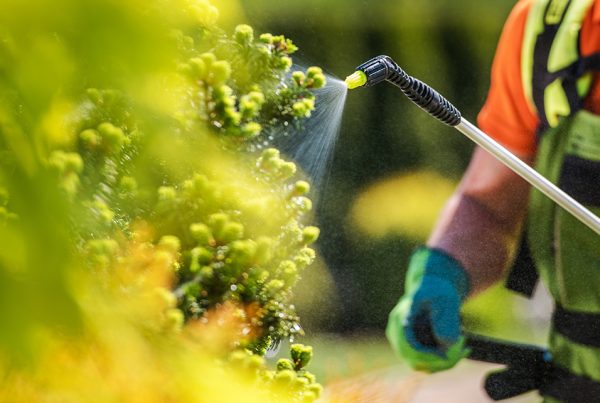
In recent years, Toronto, like many other regions around the globe, has been experiencing the effects of climate change. As temperatures rise and weather patterns become more unpredictable, the city’s ecosystem is undergoing significant shifts, impacting various aspects of daily life. One such consequence that often goes unnoticed is the influence of climate change on pest patterns. In this blog, we’ll explore the evolving dynamics of pests in Toronto, the contributing factors, and how residents and pest control service providers can prepare for these changes.
Understanding the Link between Climate Change and Pest Patterns
Climate change affects ecosystems in numerous ways, creating new habitats for pests, altering their life cycles, and enabling them to thrive in environments where they were once limited. Toronto’s changing climate has led to warmer temperatures, altered precipitation patterns, and more extreme weather events, creating favorable conditions for the proliferation of certain pests.
Temperature Extremes and Pest Behavior
With rising temperatures, pests that were once restricted to warmer climates are gradually moving northward. This migration introduces new challenges for pest control, as species adapt to the changing climate and find hospitable conditions in regions where they were previously uncommon. Warmer winters can also impact the survival rates of pests, allowing more of them to endure and reproduce.
Altered Precipitation Patterns
Changes in precipitation, such as increased rainfall or prolonged droughts, can affect the availability of water and food sources for pests. This can lead to shifts in their distribution and abundance. For example, mosquitoes, which thrive in standing water, may become more prevalent with increased rainfall, posing a higher risk of vector-borne diseases.
Extreme Weather Events
Toronto has experienced more frequent and intense extreme weather events, including heavy rainfall, storms, and heatwaves. These events can disrupt ecosystems, displace pests, and create new breeding grounds. Additionally, the damage caused by storms can weaken structures, providing entry points for pests into homes and businesses.
The Changing Landscape of Pest Infestations in Toronto
As the climate continues to evolve, Toronto residents are likely to witness changes in the types of pests that pose a threat to their homes and communities. Some of the pests that may become more prominent include:
- Ticks and Lyme Disease
Warmer temperatures can expand the habitat of ticks, increasing the risk of Lyme disease transmission. Residents in wooded or grassy areas should be particularly vigilant and take preventive measures, such as wearing protective clothing and using insect repellent. - Mosquitoes and West Nile Virus
With increased rainfall and warmer temperatures, the breeding season for mosquitoes may lengthen. This could elevate the risk of diseases like West Nile virus, emphasizing the importance of mosquito control measures and community-wide efforts to eliminate breeding sites. - Rodent Infestations
Changes in temperature and precipitation can affect the availability of food sources for rodents, leading to increased urban infestations. Effective waste management practices and sealing entry points in buildings can help mitigate the risk of rodent-related issues. - Ants and Structural Damage
As extreme weather events become more common, ants may seek refuge indoors, posing a threat to the structural integrity of buildings. Regular inspections and proactive pest control measures can prevent infestations and subsequent damage.
How to Prepare for Changing Pest Patterns
- Stay Informed
Keeping abreast of climate trends and local pest patterns is crucial. Regularly check local weather forecasts and stay informed about emerging pest threats in Toronto. Government agencies and pest control service providers often provide valuable information on these topics. - Implement Integrated Pest Management (IPM)
Adopting an Integrated Pest Management approach is essential for dealing with evolving pest challenges. This holistic strategy focuses on prevention, monitoring, and control, minimizing the reliance on chemical treatments and promoting sustainable pest management practices. - Seal Entry Points
Given the potential for extreme weather events and temperature fluctuations, it’s crucial to seal entry points in buildings. This includes inspecting and repairing gaps, cracks, and openings in walls, doors, and windows, which can serve as access points for pests. - Proactive Pest Control Measures
Regular pest inspections and proactive pest control measures can help identify and address issues before they escalate. Pest control service providers can conduct thorough assessments, implement preventive measures, and offer advice on minimizing the risk of infestations. - Community Engagement
Engaging with the community is vital in addressing pest challenges associated with climate change. Community-wide efforts, such as organized clean-up initiatives, waste management programs, and public awareness campaigns, can contribute to a collective defense against pest infestations.
Conclusion
As Toronto grapples with the consequences of climate change, the implications for pest patterns underscore the importance of proactive measures and community-wide engagement. Recognizing the evolving dynamics of pests in the city, it becomes evident that a collaborative approach is essential to address the challenges posed by warmer temperatures, altered precipitation patterns, and more frequent extreme weather events.
At GTA Toronto Pest Control, we stand at the forefront of pest management in the Greater Toronto Area. Our comprehensive range of services, encompassing wasps, bees, rodents, ants, bed bugs, and more, reflects our commitment to safeguarding homes and businesses from the ever-changing pest landscape. Beyond merely addressing immediate concerns, our approach delves into the root causes, ensuring a sustainable, long-term solution that prevents future infestations.
As the climate continues to evolve, so does our commitment to staying at the forefront of innovative pest control strategies. By combining our expertise, comprehensive services, and customer-centric approach, GTA Toronto Pest Control remains your trusted partner in creating pest-free environments, ensuring the well-being of our community in the face of changing pest patterns and environmental challenges. For pest control services in Toronto, get in touch with us!












